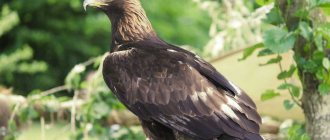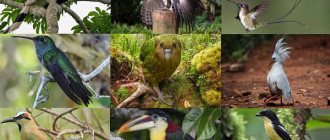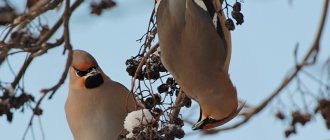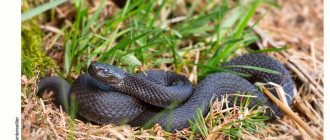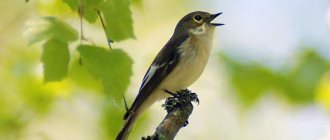The cheerful chirping of birds lifts your spirits. Even Russian empresses were treated with ornithotherapy. A walk in the forest accompanied by cheerful bird trills helps with chronic fatigue, depression and headaches. But some birds prefer to perform their songs at night. In the city, endless noise and chatter can be annoying and make it difficult to sleep. Let's figure out which birds sing at night.
Nightingale
The main singing bird of May is the nightingale. He flies home after spending the winter in warm regions and happily starts his songs. The nightingale sings loudly and chooses complex compositions, but often repeats the same melody. If he chirps near an open window, you won't be able to fall asleep.
At night, the nightingale energetically whistles “fut-fut” and plays “dew-dew”, “dur-dur”. The birds perform clear and sonorous trills, into which they interweave the crackling and clicking sounds “tsir-tsir-tsir”.
The mating season begins in spring. The nightingale tries to please the chosen one and wooes her with the help of bewitching songs. The concerts continue until the female pays attention to the gentleman.
But in the cheerful chirping there can be aggressive notes. Nightingales emit irritated trills if a stranger appears on their territory. The birds fly towards him to drive him away. And during the flight they perform songs. Now you know what bird sings at night in May.
Common Nightingale
What nightingales look like, where they live, how they sing - photos and videos
The beautiful nightingale bird in the world is better known for its beautiful melodies than for its appearance, and many people have simply never seen a nightingale, although, of course, they have heard its melodic flute trills more than once in the spring - from the end of April, throughout the month of May and June.
But the nightingale is quite modest in appearance, even too modest. – This combination is very rare in nature, when the singing king of birds, having a “diamond voice”, contains, like a precious stone, a nondescript, unremarkable frame (for example, not gold or silver, but a frame made of ordinary wood). But at the same time, such a combination, in my opinion, is unique and original - an appearance that actually glows with naturalness, standing out with natural beauty, having other colors and colors in the plumage - not bright and multi-colored “parrots”, but soft, uniform and gentle. These are light brown:
Photo: Common Nightingale
The nightingale is most similar in its coloring, and overall appearance, to a sparrow. This bird is considered scientifically as a relative of passerines, the order of flycatchers. Although the nightingale itself is much larger in size than the sparrow, it is even more similar in appearance to the starling, only different in color (and, of course, in its charming singing voice). An adult nightingale usually has a body length of seventeen - twenty centimeters, and its weight is about 20 - 25 grams. The wings of a nightingale are approximately 9 centimeters, and their wingspan reaches 29 - 30 centimeters.
Kamyshovka
Another nocturnal songbird is the garden warbler. The bird is one of the last to return, so it begins to sing only towards the end of May.
She performs melodies for hours without repeating her repertoire. The trills are energetic, cheerful and do not get boring. The warbler hoots, whistles, and makes cracking sounds. Sometimes the bird can repeat couplets several times.
The warbler is smaller than a nightingale and weighs no more than 15 g. Therefore, its songs are quieter and more gentle. It's nice to listen to them.
Warblers nest in grass and reeds and love areas near swamps and floodplains of lakes. Birds start trilling in rose hips and abandoned gardens.
Thrush warbler
Dentobeaks
Corvids
Some representatives of corvids are classified as songbirds, although the sounds they make are clearly not for everyone. Distinctive qualities: most of them have an awl-shaped beak, a beak at the end with a noticeable tooth-like notch. They feed on insects, some attack small vertebrates.
The song consists of low whistles and loud cries of “kzhe-kzhee”.
Listen to the voice of the cuckoo:
Paradise
Unlike the previous family, they are very beautiful with their bright plumage. It is difficult to imagine them as relatives of our sparrow. Most live in tropical regions - New Guinea, Indonesia, Eastern Australia.
However, the males look like this, while the females are much more modest in their brownish-brown outfit, only slightly decorated with a white cap on their heads.
Birds of paradise are distinguished by their bright colors and unusual plumage shapes.
Sounds are also made mainly by males. We do not undertake to say that these are the most musical birds, but together with their chic appearance, the spectacle is mesmerizing.
Listen to the voice of the paradise flycatcher:
Shrikes
Small songbirds known for their original way of preparing food. They catch insects, small animals, small birds and even small reptiles, and impale them on sharp branches or thorns of plants.
Interesting! Despite their rather modest size, shrikes are mainly predators.
If the prey is not eaten immediately, the hunter returns to it later. The shrike family includes 32 species of birds of various types , colors, and habitats. They are distributed all over the world.
Often their names coincide with their geographical residence: Siberian, Burmese, American, Indian;
Or they are named according to external characteristics: red-tailed, gray-shouldered, white-browed, red-headed;
Pictured is a red-headed shrike
Either by demeanor or other qualities - the prosecutor-shrike, the governor-shrike, the Newton-shrike.
Shrike - prosecutor
However, they all have one thing in common - a strong beak, a predatory disposition and bold behavior. For the most part, they sing rarely, the song is an indistinct chirping. However, sharp calls of the male are often heard, which resemble the loud buzz of a wound watch.
Listen to the voice of the red-headed shrike:
Starlings
Small birds, most of them rather inconspicuous in appearance. Starlings are most often migratory birds. They are often called mockingbirds for their ability to imitate different sounds. Starlings often adapt to the singing of other birds and easily reproduce them, and so do the females. The structure of male singing is quite complex and strictly individual. It is absolutely impossible to confuse the voice of one singer with another.
Interesting! Among the starlings there are quite bright specimens - the golden-breasted spreo, the tricolored spreo or the magnificent starling, the amethyst short-tailed spreo. They live mainly in hot regions of Africa.
Amethyst Spreo
We happened to observe an ordinary starling with greyish, inconspicuous plumage. But we can enjoy his voice. It is with his song that pleasant work begins in the spring; we make birdhouses for him. If there is a starling in the garden, the insects rapidly decrease. He is not only a singer, but also a hard worker.
The common starling creates a spring mood with its chirping
Their trills and whistles, as well as sometimes not very musical creaks, meows and rattles, usually announce the arrival of a wonderful spring season.
Listen to the voice of the common starling:
Troupialaceae
The next number of our concert program is American orioles or troupials. The main colors are black and yellow, although some are surprising with a red head (red-headed troupial) or white plumage on the back of the head and wings (rice troupial).
Red-headed corpse
Rice troopial
There are also individuals that are completely black in color - mourning corpses. The sounds made by birds of this family are close in tone and reproduction to our oriole - quite musical, consisting of repeated trills and whistles.
Listen to the voice of the corpse:
Tits
In total, 10 species of tits out of 60 live in Russia. These are the tufted and eastern tits, the Muscovy, the common and white tits, the black-headed, grey-headed and brown-headed tits, as well as the yew and common tits.
Listen to the voice of the tufted tit:
It is believed that the Muscovy bird got its name not because of its habitat, but because of the plumage on its head that resembles a mask.
Listen to the voice of a Muscovite:
The blue tit has a second, most common name - prince
Listen to the voice of the blue tit (princelings):
Pictured is a yew tit
In harsh winters, they try to stay close to people, looking for warmth and food. Once upon a time in childhood, we made feeders and put pieces of lard there - for the titmouse. She sings tenderly and comfortably - “qi-qi-qi” or “pi-pi-zhii”. Experts distinguish up to 40 variations of the sounds it makes.
Listen to the voice of the great tit:
Orioles
This family mainly includes tropical inhabitants. In Russia it is represented by only two species - the common oriole and the Chinese black-headed one.
The common oriole is a very beautiful bird with bright plumage
Females look more modest - greenish-yellow above and grayish below. The singing of the oriole includes several dissimilar roulades. Either the sound of a flute, or sharp abrupt sounds like a falcon - “gi-gi-gii”, or the completely unmusical cry of a frightened cat. The bird is sometimes called a “forest cat.”
Listen to the voice of the common oriole:
Chinese black-headed oriole
Flycatchers
Quite small birds with a slightly flat and wide beak. The tail is straight, short, with a cutout at the end. What is common to all is the ritual of eating. They sit on the branches of a tree and fly up after a flying insect, and when they catch up, they swallow it on the fly.
On different continents, blue flycatchers, stonechat redstarts, wheatears, robins, bluetails, rock thrushes (which are also classified as flycatchers) and many other birds that make up a large family chirp, whistle, trill, and generally sing. This family includes 49 species, among which there are real singing professionals.
Blue flycatcher
Listen to the voice of the common wheatear:
Bluetail bird
Listen to the bluetail's voice:
The nightingale is a songbird , and its singing since childhood has been associated for us with the concept of home and homeland.
The nightingale's singing is not an endless variation, but a set of repeated whistles and trills; the number of sounds can reach twelve and is repeated several times. It is appreciated for the purity of its sound and the quiet guttural roulades that emerge, as if touching the heart.
Listen to the nightingale singing:
Like many birds, they have clearly expressed sexual dimorphism. The male has a bright multi-colored chest made up of orange-brown, blue, black and red feathers. The rest of the body is beige-gray. The female is all covered with dark gray and light gray feathers, only on the chest there is a dark blue frill with a light insert.
The bluethroat is easily recognized by its blue breast plumage
Listen to the voice of the bluethroat:
A cute little bird, the size of a sparrow. Its distinctive feature is a crimson-red breast, the color of the morning dawn. Hence the names. The rest of the plumage is gray with a marsh tint. The baby begins to sing at night, long before dawn, after the redstart.
The song is ringing, iridescent, and is considered one of the most beautiful. Both sexes sing, but the female has less variety in her tune. Being a migratory bird, it is one of the first to return to the northern regions.
Robins have many names, one of which is robin.
Listen to the robin's voice:
Pictured is a chased redstart
Listen to the voice of the redstart:
Blackbirds
Small and very active birds, densely built. They are distributed all over the world. What they have in common is the habit of resting with lowered wings, having a crouched appearance, as well as moving on the ground by jumping. Many blackbirds are migratory birds.
Pictured is a song thrush
Listen to the song thrush:
Slavaceae
The warbler bird, which gives its family its name, is one of the largest in its family. Its ability to move deftly in dense thickets and its simple plumage of gray-brown tones with a greenish tint allow it to go unnoticed even when dangerously close to human habitation.
However, the song of the warbler, rich, polyphonic, iridescent, reminiscent of the flow of a stream, is clearly audible from afar. “Slavochny talk” - that’s what people call it. Warblers, like most migratory birds, winter in Africa.
The songbirds of Russia are supplemented by several species of warblers out of 26 existing ones. These are the garden warbler (currant), gray warbler (talker), lesser warbler (miller), black-headed warbler, white-whiskered, hawk-tailed, desert and warbler.
Listen to the singing of the garden warbler:
Pictured is the Black-headed Warbler
Listen to the singing of the Black-headed Warbler:
Wagtails
There are only five genera in this family - pipits, golden pipits, wagtails, tree wagtails, and starling pipits. But they are widespread throughout the world. In Russia we are very familiar with pipits and wagtails.
Listen to the wagtail singing:
Listen to the voice of the yellow wagtail:
Yellow-headed wagtail
Listen to the singing of the yellow-headed wagtail:
These are different variations of gray, brown, brown, olive and white tones. They blend so much with nature that even within a family, scientists have difficulty distinguishing between individual species.
Listen to the singing of the forest pipit:
Listen to the voice of the red-throated pipit:
The song of the skate is a real miracle. We can safely call him a “singing healer”; his voice, along with other birds, is used in neurological centers for rehabilitation.
Interesting! Pipit singing is known to have a calming effect.
Robin (robin)
The migratory bird is one of the first to return home. Already in April, she sits on low branches and selflessly sings night songs. The birds are not even afraid of humans and do not pay attention to him, carried away by their trills.
The Robin is a small round bird with a red face and chest. Her trills constantly change volume. The Robin sings the first verse loudly and clearly, and ends the melody with a barely intelligible chirp with a “metallic” timbre. The robin hisses and wheezes while trilling.
Birds chirp loudest during the mating season. Often they have to chat all day and night in order to win the attention of the lady they like.
And one more technical characteristic given during contact is that the Universe can reside in a maximum of 36 dimensions, the most intellectually powerful civilization lives in 7 dimensions; and we, for those who don’t know, are in three.
Who are we? In their opinion, we are an experiment of a civilization from the planet Tron, located in the constellation Canis Major. But the experiment was unsuccessful: our souls (the basis, the eternal, the existing) came out with a flaw, they are too emotional, and most importantly, aggressive, capable of ruthlessness; as representatives of the CC admitted, they live according to laws from which they cannot retreat a single step and cannot even think about retreating - this threatens disaster. They accuse man of being unprincipled and are very afraid that we, having developed technically, will begin to threaten the Universe. That's why they are afraid of us. We threaten them, and they want to destroy us, since they are unable to correct us. And they want to do it with our own hands! For this, they introduced their saboteurs into our ranks... (When I was “told” this, I began militantly, using untranslatable “folklore” - I was so excited - to prove to them that in this case they themselves were scoundrels. After which they switched off, and I felt so physically ill that I thought I was going to other worlds.)
But, as it turned out later, their world is also not clear-cut, and they have an opposing group of civilizations, which is considered “black power”, space pirates. And these dissatisfied ones, while opposing, stand on our side, while at the same time also fearing us. And if one group gives us another ten years to exist, the other leaves the timing of our self-destruction uncertain. (Well, we have time to eradicate anger in ourselves, and maybe then we will live indefinitely...) By the way, in our dialogues, representatives of some CCs often said that in order to answer some of our tricky questions, they need to consult with “ The central mind,” to which they are subordinate; others referred to the command. It turns out that they are all also far from democracy, from complete freedom.
And it also turned out that they are very jealous of us, or rather, our souls, and (what they fear) - their freedom!
It further became clear that all our knowledge is not our knowledge, but theirs, slipped to us in various ways; some - to delay the progress of our civilization; others, “hooligans,” for progress, in order to annoy the opposing group. It also turned out that science fiction writers are all active “contactees”!
They also said that the best specimens of the souls of earthlings are taken to themselves. Maybe that’s why the best people, according to our standards, die so early?
We asked about Roerich’s magic square and they answered that it was a bluff, disinformation slipped to us.
But, for example, do you know why Arabic numerals 1, 2, 3, 4, etc. are written this way? It turns out that this is a code, a movement code. They have the key to it. As they stated, if we know it, “the planet can change its course.”
Now about a fact that may shed light on the reason for the appearance of UFOs here: a rare alloy or combination of chemical elements was found in the “zone”, which earthlings (that is, you and me) do not yet know how and where to use and how to obtain artificially .
Of course, I didn’t tell you everything. I deliberately hid some things in order to put them aside for the next article, some things no one in charge would miss, and some things I probably forgot. But I think it’s not scary, because the study of the zone is just beginning, which means there will be new publications.
Maybe I'm too optimistic, but it seems to me that the time for answers is very close! Moreover, the anomalies began to give us the keys to their locks.
Bird "singing at night about death"
The story told by Ulyanovsk resident Alexey Fomich Vetrov is so incredible that it’s hard to believe. But this is the absolute truth.
— From 1944 to 1946 I had to work as a foreman in one of the camps in the Polar Urals.
Our camp, which like many others, was mixed - criminals and “enemies of the people” imprisoned under Article 58 were kept together. Few survived here: a month passed, then two, and there were noticeably fewer people in the zone until a new train arrived with “replenishment.”
In addition to the prisoners, military builders and we, civilians, worked in the camp. There were about two dozen “free spirits” like me. What were they building? At first, temporary housing was erected for newly arriving prisoners, military and civilians, who were initially housed in tents with stoves. When the barracks were finished, military personnel and freemen moved into them, a little later we were moved to special “Finnish” houses, and the prisoners moved from the tents to the barracks, but... behind barbed wire. Later, when the housing issue was dealt with, three brigades of prisoners were put at my disposal, we dug pits, made shafts and concreted the latter. They didn’t say why exactly: the depth of the pits and shafts was amazing! Then many ceilings were created over them - probably top-secret underground military communications were built. However, what they were intended for - one could only guess: only years later I learned that many of the constructed silos were intended for... strategic missiles! It’s amazing: our state didn’t have missiles in those years, but we prudently built mines...
The Urks, thieves and bandits, openly and provocatively shirked work, which the convoy just as openly condoned. “Enemies of the people” are another matter... I note that at a construction site, death for prisoners was not uncommon: in one year, five people died in my three brigades, not counting the people who died from exhaustion! In addition, at construction sites, prisoners often settled personal scores - they walled up their own friends or those who had been “fined” in concrete. When the mixture dried, and it set in 12 hours - I note that the composition of grade 600 was used - don’t hammer it... it’s useless. This is what the prisoners took advantage of: it happened that the body was immersed in concrete only up to the chest, having previously been tied and gagged so that the poor fellow would not scream, sometimes they killed him, and for safety they were always attached to the legs with a chain. It was not possible to pull the body out of the hardened concrete, therefore, it happened that protruding and frozen parts of human bodies... were sawed off or chopped off, but the latter happened extremely rarely and more often prisoners made “sarcophagi”. For the condemned man, before immersion in concrete, they made formwork above his head so that he would not die longer, and... walled him up.
The criminals could do a lot in the zone, and the camp was run by an authority named Uncle Vanya.
One day I saw him: small, puny and very stooped. A man like a man, but he was considered a thief in law, and his opinion was considered indisputable for the camp inmates, however, the camp authorities did not disdain the help of authority: firstly, the criminals maintained order in the zone, the “ohra” assured, and secondly, without the permission of their uncle Vanya, not a single brigade went to work, and if the prisoners were kicked out by force, they only sabotaged the production task.
To force a prisoner to work on holidays, the camp authorities again turned to Uncle Vanya, and if he did not give the go-ahead, then... no one could do anything. However, when the first prisoners from among the “front-line soldiers” appeared in the camp, the attitude towards prisoners changed dramatically...
It was as if the camp authorities suddenly felt ashamed of the outrage they were committing. Even the dead began to be buried in graves, and the bliss became subdued. It is clear that these people went through the front, many were in fascist concentration camps, they saw things that neither the camp authorities, nor the guards, much less the thieves, could smell. They even had a different attitude towards death; the guards called them “front-line soldiers,” and the urks called them “fascists.” They completely occupied one of the barracks, stayed together, and fought off the hunters to other people’s parcels from home - lesson, the “half-colored”, “jackals” in an organized manner - with sticks. But somehow it happened that one of the “lessons” was soon found near the “fascist” barracks with a knife wound in his chest. The Urks made claims to the “front-line soldiers”, and a meeting of the thieves’ authorities with Uncle Vanya at the head and the “front-line soldiers” took place in the camp. The parties discussed spheres of influence and then parted ways, but... the camp authorities, who supported the thieves, secretly incited the lesson to deal with the “front-line soldiers”, and Uncle Vanya, as one might guess, did not accept the infringement of his unlimited power in the camp, and one day it happened the following: the criminal authority, egged on by the camp authorities, organized... an escape in which one of the “fascists” took part. For what? I assume - to unleash repression against “front-line soldiers” and “enemies of the people.” (Looking ahead, I’ll note: Uncle Vanya clearly overdid it, but for the first time I learned about a terrible and mysterious inhabitant of the northern forests with a very long name: “the bird that sings at night about death.”)
Blackbirds
Blackbirds and songbirds perform beautiful sonorous trills. They are often compared to nightingales.
Singing blackbirds, like natural actors, perch on the tops of the tallest trees so that they can be seen from afar. Birds love everyone's attention.
The blackbird sings loudly and clearly. He slowly draws out sounds similar to the whistling of a flute. The thrush's songs are sedate, measured, without a specific duration.
song thrush
Slender-billed
Distinctive qualities: the beak is thin, long, more or less bent. The fingers are long, especially the hind ones. They feed on insects and flower sap.
Dart frogs (pikas)
They deftly climb trees in search of insects, which they extract from the narrowest crevices. The famous beak helps them with this. The song is a melodic whistle, with a short final “blow”, the current motif is “tzit”, performed in high tones, more like a squeak.
Pikas also include mosquitocatchers and wrens - two numerous subfamilies close to warblers. All of them are wonderful singers, they are called flutists for the purity of their sounds and the richness of their performance.
In the photo there is a mosquito catcher
bird wren
Listen to the voice of the wren:
Honeysuckers and nectaries
In addition to a long beak, they have an elongated tongue, which helps draw out flower nectar. In addition, they feed on insects, fruits and berries. Honeyeaters usually have dark colors, while sunbirds have bright, festive colors, with many pearlescent tones. That’s why their names - malachite, orange-breasted, bronze, purple-bellied, red-throated - all speak of elegant plumage.
Owls
Even with a stretch, owls cannot be called noble singers. But at night they often let out a long “goo-goo-goo” and make a dull whoop. Males have a low and hoarse voice. Birds love to perform songs in duets.
The cry of an excited owl is repeated in several versions:
- kwik-kwik,
- kua-kua,
- gook-gook-gook.
She makes these sounds when she sees enemies.
Long eared owl
Kamenka
These birds cannot walk on the ground. Wheatears jump, fly and at the same time perform night songs.
The birds shout loudly “check-check-check”. With such sounds they scare away enemies and warn their relatives of danger.
It is difficult to attack a bird suddenly. Wheatear sings songs on tall trees and rocks. She bawlers throughout the area and inspects her territory.
Wheatears make inaudible, abrupt sounds. They are in a hurry to perform the song, so they sing quickly and confusedly. Their compositions are similar to whistles and grinding sounds.
Common wheatear
Cone-billed
Distinctive qualities: beak is strong, short, conical. They feed on grains, berries, and sometimes insects.
Finches
A very large family, including real professionals in the field of singing. There are finches, and lentils, and bullfinches, and finches, and bee-eaters, and flowerbirds, and grosbeaks, and sicklebills. There are more than 50 species in total. Let's introduce some of them.
Finches feed on seeds and insects and winter in the Mediterranean or Central Asia. They arrive from wintering very early and are often exposed to frost and feel cold, which is why they were named that way.
In the photo there is a finch
The chaffinch's song is characterized by an ornate whistle and a "stroke" at the end - like a calling card.
Listen to the voice of the finch:
The photo shows a male lentil bird
The song of the lentil is the most discussed among ornithologists. Many believe that she is asking the question: “Have you seen Vitya?” After all, her phrase “Ti-tu-it-vityu...” sounds precisely with a questioning tone. In the majority, it is the males who murmur, sing and sing, although the chorus falls silent with the appearance of the offspring.
Listen to the voice of the lentil bird:
Crossbills usually sing at the beginning of the mating season; the whistles are mixed with creaks and chirps. The male is very verbose, selflessly chanting, circling and running around the female.
Listen to the voice of the crossbill:
The goldfinch’s singing is lively and beautiful - “drink-drink, drink-drink”, a varied set of chirps, trills, mixed with nasal and crackling “tsi-tsiee”. They sing from March to August, and sometimes until late autumn.
Listen to the goldfinch singing:
Listen to the voice of the siskin:
In addition to playing a song, the canary is able to remember the sequence of the melody. Thus, some trained kenari perform an entire concert program.
Listen to the canary singing:
Larks
The family today numbers about 98 species, of which 50 are listed in the Red Book, 7 are on the verge of extinction. Despite the fact that we are accustomed to considering the small bird to be a Russian inhabitant, most species are endemic to Africa, the horned lark lives in America, and the Javan lark lives in Australia. However, we are closer to the wood lark and skylark.
Listen to the voice of the skylark:
Interesting! The flight of a lark looks like a kind of ritual. Taking off vertically, it makes one loop, then flies over the nesting site, repeats the loop and lands vertically in the same way. For such a twisted flight it is called a “spinning top”.
Listen to the woodlark sing:
Weavers
This family contains more than 100 species. They are notable for the way they build their nest. It is always closed, spherical or other shaped vessel. Looks like woven. Hence the name - weavers. Among their colors there are some very outstanding ones: for example, velvet weavers are distinguished by their richness and variety of tones.
A photo of songbirds will be noticeably complemented by an image of such festive beauty. The lyrebird velvet weaver is especially famous of its kind. When performing a mating dance, he not only makes calling calls and other pleasant sounds, but also performs complex movements, spreading his long tail. Fire, West African and long-tailed velvet weavers also look elegant.
Redstart
The bird is easily recognized by its red tail. After sunset, the redstart begins its hoarse short trills “hii-hii-hii”, “ee-iii-ii”. Gradually she begins to sing and emits a long, rough, low-pitched chirp - “cher-cher-hii-hii-cher-cher.”
Redstart songs are not very diverse. On spring nights they repeat the same melody several times. The redstart sings slowly and makes sounds of medium volume that cannot be heard from afar.
Redstart
Mockingbirds
At night, the singing of mockingbirds is constantly heard during the breeding season. They chirp loudly and rarely repeat tunes. Males know up to 200 songs, so they don’t always have time to perform everything during the night.
The peculiarity of mockingbirds is the ability to reproduce the sounds of other birds and animals. Birds love complex compositions and sing long and loudly.
Mockingbird of many voices
Why do birds sing at night?
Night trills are produced even by daytime birds, which must go to bed in the evening. There are two opposing opinions about this fact.
Presumably, in the city, birds sing at night because they are attracted by the lights of big cities. But there is another opinion. The birds have to perform songs at night, because due to the noise of the cars, the females cannot hear their catchy trills. Birds have to change their daily routine.
You can even hear the quiet chirping of birds in the forest. And in the city they have to shout louder than usual. Sometimes the noise from birds is so loud that people have to close their windows tightly. Otherwise, they will not be able to sleep at night.
Have you heard the birds singing at night?
Features and habitat of the nightingale
Nightingales are divided into two types - ordinary , those that prefer European countries and Siberia, and in winter they fly to East Africa and southern ones , which are called so because they live closer to the southern regions.
Pictured is a southern nightingale
From observations it was concluded that the talent for singing is more inherent in the common nightingale, but the southern one is not particularly inferior to it in this. There are also meadow nightingales that live mainly in Transcaucasia and Asia. They also try to sing, although they are not very good at it, like ordinary and southern ones.
Deciduous forests, slightly damp, dense bushes - these are the places that these birds love. The main thing is that there are dense thickets and more sun. If the place is favorable for them, you can hear their trill at a distance of 10-15 meters from each other, which merges into an incomparable melody of happiness.

